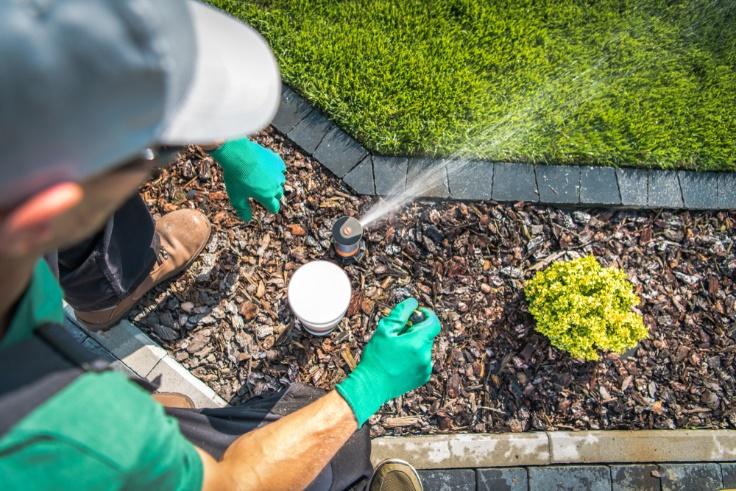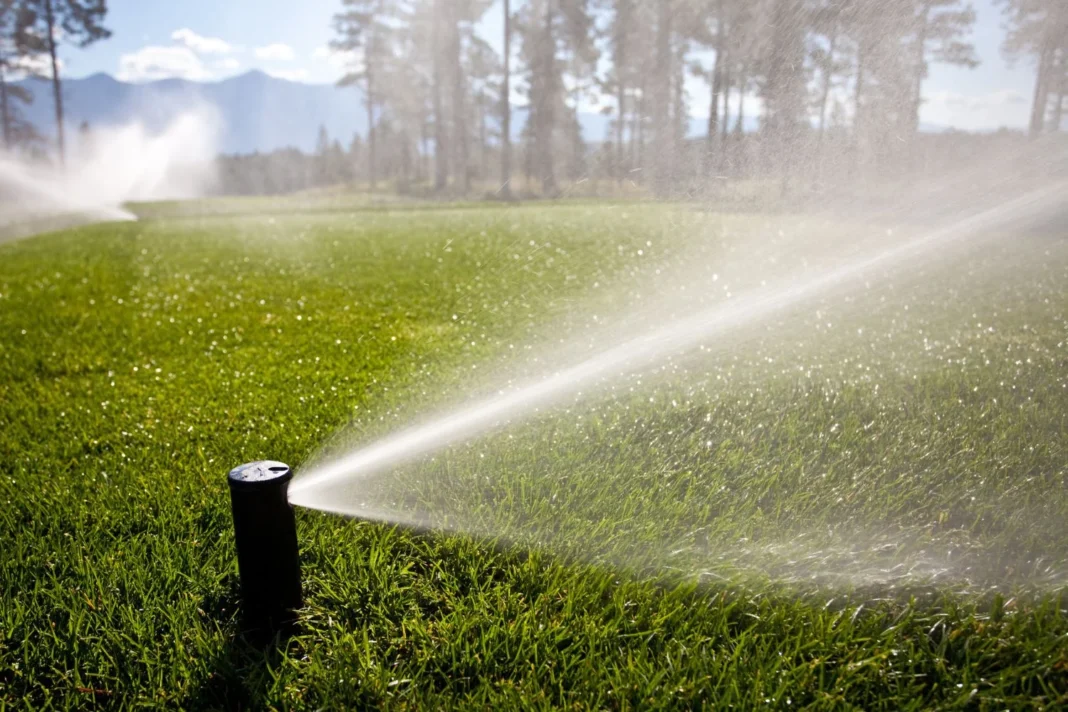If you have a lawn — and you probably do, considering that turfgrass is by far the most popular crop grown in the U.S. — you need some form of irrigation. Water is perhaps the most fundamental of grass’s needs; without a reliable source of water, grass will fail to thrive, stop growing and ultimately die. Your lawn should be getting about 1.5 inches of water per week, depending on your grass variety and climate.
Hoses are a common way to water a lawn, but they certainly aren’t the best way. First, using a hose to water your lawn requires you to remember to turn the water on and off at the right time of day and week. Secondly, hoses typically fail to provide uniform irrigation, even when you add sprinkler attachments; the water simply won’t reach certain corners of your grass, meaning those areas won’t grow as well, and your lawn will look patchy and unkempt.
A better solution is to install an automated sprinkler system. This allows you to place sprinkler heads so that every square inch of lawn receives the right amount of water — but more importantly, it allows you to schedule waterings, so you never have to remember to turn the hose on or off to preserve your lawn’s health.
While sprinkler systems are by far the superior irrigation method, they aren’t foolproof. In fact, you will need to care for your sprinkler system the way you would work to maintain any system around your house to ensure that it works reliably — and allows you to avoid pulling out the hose. To that end, here are some tips for sprinkler maintenance to keep your grass easily green.
Be Familiar with Your Sprinklers

Not only should you know what kind of sprinkler system you have — for example, what spray heads you use, whether sprinklers pop up or stay up, what nozzles you have, etc. — but you should also know how your exact system functions. Specifically: How long does it take for your sprinklers to provide your lawn with an inch of water?
This is important to know because you don’t want to water your lawn too much or too little; you need to be able to set your sprinklers to run for the perfect amount of time. You can test your sprinkler system using the tuna can test, whereby you set out small containers all around your lawn (tuna cans work well, but you can use any rather shallow container) and time how long it takes for them to fill up one inch. Then, you should set your system to run for that long once per week or half as long twice per week.
Inspect Your System Regularly
The outdoors does a number on any manmade system. It’s not uncommon for sprinkler systems to break in some way or another, and the sooner you catch a problem, the less likely that problem is to ruin your lawn or else cost an exorbitant amount in sprinkler maintenance and repairs. You should look for leaking lines, which might indicate a hole or merely a broken connection. You should also check your sprinkler heads to ensure they are pointing the right direction when they spray.
Pay Attention to Efficiency
Speaking of misdirected sprinkler heads, you should try to ensure your sprinklers are providing water as efficiently as possible. If there is a ton of runoff on your hardscaping or water is pooling in one part of the lawn while another area is bone-dry, your system isn’t efficient. The same is true if your sprinklers create mist instead of spray. You might need to reposition your sprinkler heads, adjust the flow or install additional tools, like pressure control devices, to improve efficiency.
Change Your Schedule Seasonally
It doesn’t matter where you live; the weather changes every season, which means your sprinkling schedule should change, too. Typically, you should be watering most heavily in the summer, when rain is scarce and temperatures are high. However, you might want to speak with a lawn expert about how much you should irrigate for every time of year in your area.
Hire Professionals Annually

Even if your sprinkler system seems to be working fine, it’s a good idea to bring in professionals once a year, usually in the late spring, to conduct a more thorough inspection and perform a system tune-up. Because sprinkler systems are complex, you probably won’t be able to identify all of your system’s needs. These annual visits will fill in the gaps of your care and ensure your sprinklers work into the future.

